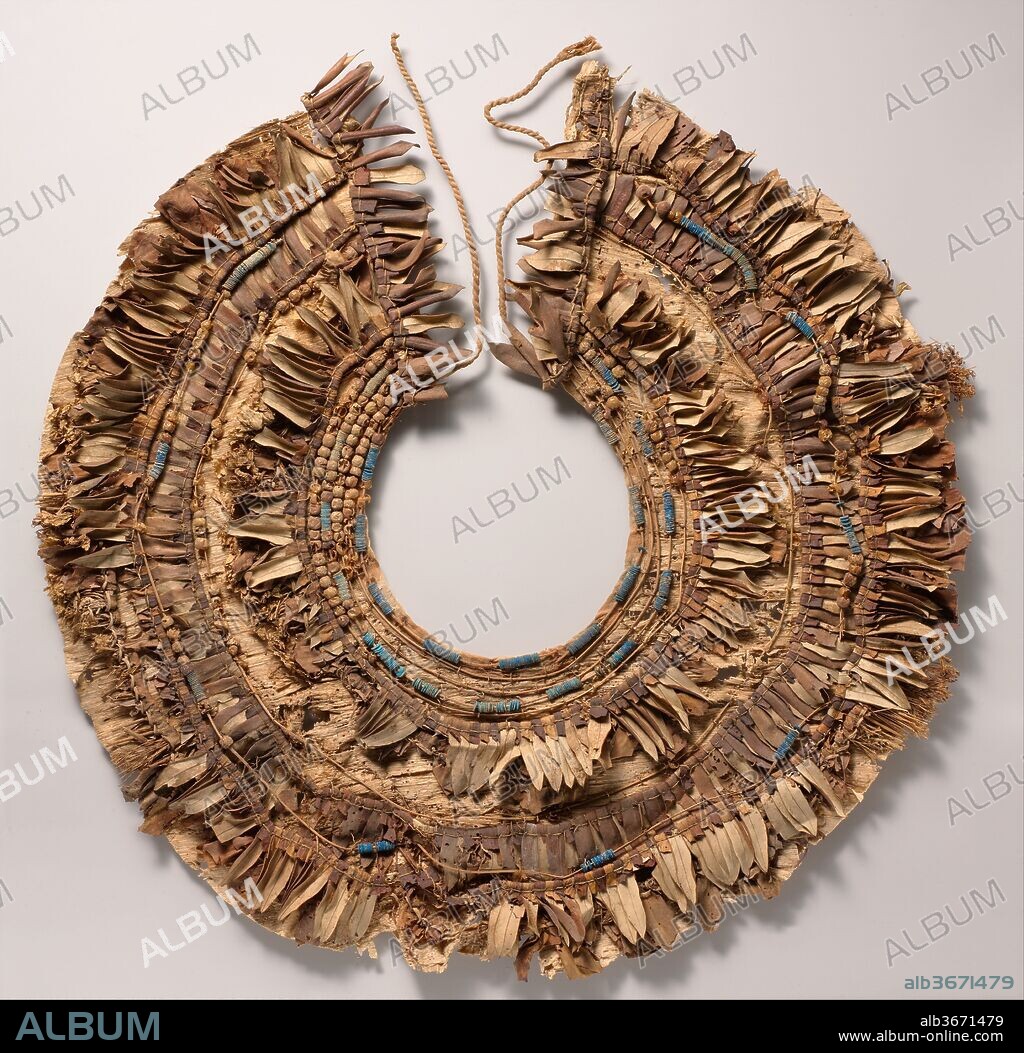alb3671479
Floral collar from Tutankhamun's Embalming Cache

|
Add to another lightbox |
|
Add to another lightbox |



Buy this image.
Select the use:

Title:
Floral collar from Tutankhamun's Embalming Cache
Caption:
Floral collar from Tutankhamun's Embalming Cache. Dimensions: Diam. 47 cm (18 1/2 in.); W. 17 cm (6 11/16 in.); Diam. of disk beads 0.5 cm (3/16 in.). Dynasty: Dynasty 18. Reign: reign of Tutankhamun. Date: ca. 1336-1327 B.C..
This remarkably well preserved floral collar illustrates how the broad collars so frequently depicted in Egyptian tomb paintings were made. Alternating rows of flower petals and blossoms, leaves, berries, and blue faience beads were sewn to a papyrus backing, and linen ties secured the collar around the wearer's neck. Some of the flora used in the Tutankhamun collars have been identified as olive leaves, cornflowers, and poppies. Several collars in the cache were bound around the edge with red cloth, and the resulting combination of red, blue, black, and green must have been very colorful and similar to the polychrome decoration on some of the pottery jars in the same deposit.
Technique/material:
Papyrus, olive leaves, persea leaves, nightshade berries, celery (?), faience, linen dyed red
Period:
NEW KINGDOM
Museum:
Metropolitan Museum of Art, New York, USA
Credit:
Album / Metropolitan Museum of Art, NY
Releases:
Model: No - Property: No
Rights questions?
Rights questions?
Image size:
4069 x 3975 px | 46.3 MB
Print size:
34.5 x 33.7 cm | 13.6 x 13.2 in (300 dpi)
Keywords:
AFRICA • BROAD COLLARS • COLLARS • COSTUME • DYEING • EGYPT • EGYPTIAN ART • FAIENCE • FROM EGYPT, UPPER EGYPT, THEBES, VALLEY OF THE KINGS, EMBALMING CACHE OF TUTANKHAMUN (KV 54), DAVIS / AYRTON EXCAVATIONS, 1907 • JEWELRY • LINEN • METROPOLITAN MUSEUM OF ART, NEW YORK, USA • NECKLACES • NEW KINGDOM • PAPYRUS • PAPYRUS, OLIVE LEAVES, PERSEA LEAVES, NIGHTSHADE BERRIES, CELERY (?), FAIENCE, LINEN DYED RED • THÈBES • UPPER EGYPT
 Pinterest
Pinterest Twitter
Twitter Facebook
Facebook Copy link
Copy link Email
Email
